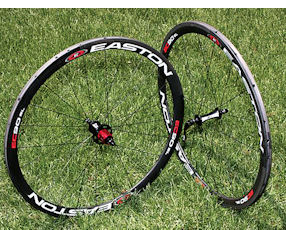If Easton-Bell Sports Inc. were a team, it might be the 2002 Oakland Athletics. Made famous by the “Moneyball” book and movie, they were an assemblage of low-key but ultimately successful players who worked well together. The Van Nuys athletic gear company doesn’t make much news, but it turns consistent profits even as it goes up against much bigger rivals such as Nike Inc. and Under Armour Inc. This month, though, the company made headlines with the appointment of Terry Lee as its chief executive, replacing Paul Harrington who left the company after more than four years. Harrington could not be reached for comment, but the company said he left to spend more time with his family. In corporate America that is usually code for something else, but the CEO left a company that appears in good shape. Easton-Bell is not a public stock company, but its debt trades publicly so the company makes quarterly filings with the Securities and Exchange Commission. In its most recent filing, it reported net income gains of 15 percent in the first three quarters of last year. Between 2009 and 2011, the bottom line improved from a loss of $4.1 million to a profit of $10 million. The company expects to release its 2012 financial results within the next month and Lee said they will be good. Meanwhile, Lee told the Business Journal he has big plans for growth. “We have a great company on a great path,” Lee said. “Our lifeblood is new products and that’s what we do best.” Lee said one sector where he sees potential for growth is cycling. The Action Sports Division, which includes the bicycle business, accounts for almost half the total sales of the company, Lee said. The division sells bicycle helmets, components and accessories under the Easton, Bell, Giro and Blackburn brands, as well as snow sports equipment. The Easton brand in particular has some high-end offerings, including bike racing wheels that can cost $1,000. Another opportunity lies in moving beyond equipment to athletic lifestyle apparel. Lee said the company, under its Giro brand, has spent the last 18 months working toward the release of a new clothing line for cyclists. It will feature casual, livable fabrics and styles, rather than the skin-tight Lycra that athletes compete in. The new line will be released this spring. “This will not be your traditional gear for professionals and hardcore enthusiasts only,” Lee said. “We’ll be investing more in the apparel market in 2013. It’s a very big and important priority for us.” That move may give the company a good offset to what is otherwise a low-margin business, according to Paul Swinand, an analyst that covers sporting goods companies at Morningstar Inc., a market research firm in Chicago. He said companies such as Nike can see profit margins near 45 percent, while companies focused mostly on equipment, such as Easton-Bell, hover around 8 or 9 percent. Despite considering the apparel line a smart business decision, Swinand is wary. “If it’s so easy to make these high-return products, why isn’t every company doing it?” Swinand asked. “It’s not that easy. It’s a tough, competitive business.” Down the field Like most professional sports teams, Easton-Bell is an assemblage of different pieces. In 2004, Fenway Partners LLC, a New York private equity firm, purchased Bell Sports to its portfolio and combined it with Riddell, the company that makes the official helmet of the National Football League. Then in 2006, the company added Easton Sports in a transaction valued at about $400 million to form Easton-Bell Sports. Today, it stands as one of the biggest players in the hard goods sporting equipment industry with brands that include Easton, Bell, Riddell, Giro and Blackburn. Lee, the new chief executive, has been a member of the board at the company since 2000, and also acts as chairman of subsidiary Bell Automotive Products. He was previously co-owner and of Bell Sports, and served as chief executive at that company from 1989 to 1999. In addition to Lee, the other new member of management team is President and Chief Operating Officer Timothy Mayhew. He is also a managing director of majority shareholder company Fenway Partners. Mayhew said one of his top priorities is distribution. The company is in the construction phase of a more than 800,000 square-foot production facility in Rantoul, Ill. Mayhew expects to be shipping out of the facility by fall. “We need to invest further in distribution,” he said, adding that of the 32 facilities Easton-Bell operates worldwide, the Rantoul building will be the most automated. Moreover, Easton-Bell is in the process of releasing new equipment, including a new hockey skate and stick under the Easton brand. Financially, the company is in good position, according to Swinand. Though Easton-Bell has long-term debt of almost $350 million, he said that’s nothing to be concerned with. The debt level has been stable for years. “Fenway Partners aren’t the hacks of private equity,” he said. “These guys know what they’re doing.”
